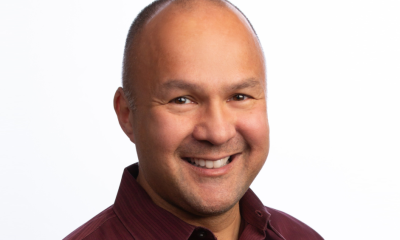Interviews
Honey Mittal, Co-Founder & CEO at Locofy – Interview Series

Honey Mittal is the Co-Founder & CEO at Locofy, prior to this he was the Chief Product Officer at 3 Series A-E startups (namely – Homage, Finaccel & Wego) in early and growth stages.
Locofy turns designs into production-ready frontend code for mobile apps and web. It enables builders to ship products 10x faster using existing design tools, tech stacks & workflows. Locofy offers a plugin for Figma and Adobe XD with which makes designs responsive for different screen sizes.
What initially attracted you to computer science and machine learning?
I initially wanted to join the Indian Air Force (and got close to selection) but when I could not make it, I had 2 options : Mathematics/Economics and Computer Engineering. I got a scholarship for Computer Science at the National University of Singapore, but not for the others, so that was that.
My true interest in coding and building products only started developing towards the end of university when I built an award winning product on exchange at the University of California, Santa Cruz, followed by an internship at Microsoft when i started building mobile apps (before the App Store was launched by Steve Jobs) and I started to see my code solving real world problems.
There was no going back from that point. I realized I loved a more holistic approach at problem solving and took the jump into product management and met my cofounder Sohaib (in 2014) who was a much better engineer than me. Working with Sohaib, we have worked on travel, healthcare, and dev tooling problems for more than a decade now, and somewhere mid-way we started tinkering with machine learning to build better recommendation engines, better financial outcome decisions based on mountains of data, and now code generation directly from designs.
The recent breakthroughs in the field have only made it easier, cheaper, and faster to solve problems that were just not possible even 5-10 years back. That prompted us to start building Locofy.ai in 2021, at the crossroads of the increasing need for a design to code solution like Locofy, and the breakthroughs in ML.
In 2016-2017, along with your current co-founder you built one of the world's fastest travel mobile sites. What was this site and what did you learn from the experience?
This was wego.com‘s mobile website. In 2016 – a lot of Asian companies were contemplating killing mobile websites completely, especially in emerging markets where devices were cheap and mobile internet was slow. Flipkart even famously killed their mobile website for their app (and later retracted), but we faced a similar dilemma at Wego, where our apps were significantly better than our mobile site for performance, experience, and unit economics.
We chose to rebuild our mobile website to work like an app, using service workers, AMP and PWA concepts without any prior experience in building for the web. My cofounder Sohaib, our VP Engg (Tien) and I worked on this for 2-3 months and built our new wego mobile site and that became the fastest mobile travel site (among 150+ sites).
Our key takeaways – firstly the realization that we were not just mobile app experts, and if you put first principles thinking to any problem/ any technology and put a team of determined individuals together, anything was possible. This helps us till date, because Locofy is a devtool and we never thought about whether we had any prior experience building for engineers. We just thought of it as a problem (something we faced daily), and went for it. Also, the trio figured out that we work well together and 8 years later – we're building Locofy together again! If not for that project, the three of us may not have realized how well we work together.
When did you first realize that low-code and no-code was the future?
In 2020-2021, the whole tech world went crazy, with engineering salaries going through the roof, fueled by public market tech stocks and a surge in VC funding into tech startups. We faced this ourselves at our last company. Hiring and retaining good engineers seemed close to impossible and cheaper offshoring markets like India changed forever due to strong domestic traction. We studied the market and discovered that for every 20 open CS jobs, there was 1 CS student graduating in the USA – shedding some light on not just the situation we were in, but also the times to come.
Upon talking to our mentors and founder friends, we not only validated the problem but also got investment offers from everyone we talked to, within 48 hours of even thinking about solving the problem of writing ui code from scratch with AI-led automation. The fact that we were solving our own problem also got the interest of our fellow builders who showed interest in joining us. Very quickly, it was clear to us that the time to join the low-code revolution was here.
How did this transition to you launching Locofy?
Sohaib – one of the best web/mobile/gaming developers I have ever met (I rate him in the top 1% in the world) was super frustrated in our last project at the previous company. It required him + 2 developers to write 500 screens revamp. When I asked him why he didn't do something about it as one of the top developers around, it did not take him long to come back and tell me that we can automate UI code / 80% of the frontend tasks. In the next 2 days we met some founder friends and they all validated that we were onto something. We registered the company and raised $1M over the same weekend. We launched the first beta product 5-6 months later in Jan 2022.
Locofy takes a bit of a different approach to low-code, can you discuss how the platform takes existing designs and converts them to code?
Yes, our research showed us 2 clear results.
- The market for no-code helped mostly non-developers and designers. Great market, but not something that we were interested in.
- The market for low-code that mostly helped pro developers and designers, but valued things like code quality and keeping developers within their stack as their top priorities.
We resonated more towards #2 i.e. building for pro developers and designers, but we found none of the players in the design to code market doing even half a decent job. If they did, we would not only not build Locofy, but also start using those options to build the 500 screens we had to build. As developers and designers ourselves, we knew our teams preferred their tools (Figma for instance) and tech stacks (React, Nextjs for example) and our thesis was to just adapt and fit in (and hence, also try the tool without making changes), while working towards high quality code as the differentiator.
Locofy received some rave reviews and a lot of feedback from ProductHunt and other platforms. What were some key takeaways from this feedback?
We launched on Product Hunt 6 months after the first soft launch. The idea was to open up the lids and get feedback from more developers outside of networks. Based on that feedback, we better understood who our ideal customer profile was, why they loved us, their pain points and also who are we better off not catering to at all (and hence get more focused).
In open beta, we do not block anyone from trying Locofy, which means greater feedback velocity, but also a lot of noise. We used the feedback to learn faster and focus on users who loved the platform, and users who were a few modifications away from loving it. All of it culminated into Locofy Lightning – a 1-click solution powered by Large Design Models. It made the platform more accurate and really easy to use. We will continue learning with the same approach in free beta until we're ready to monetize eventually.
Claims for the amount of development time that is saved has a wide range, what’s the average time savings that you have personally seen?
It is difficult to give one number that fits all. Some companies with lean teams building an app from scratch have told us they saved 80% of their development time. Others building for existing codebases have saved 50% of the time. For us, if we save anything in the above 50% range, we know it is extremely valuable today, while we work on increasing that even more.
What is your vision for the future of low-code platforms and Locofy?
Frontend development is a broad space – we want to help make it easy first and define this category starting from design to UI code.
But in the long run, our vision is to help go from idea to launch to impact much faster and cheaper and make teams focus more on the complex engineering problems and business model innovation more than worrying about building interfaces. This will help the next generation of category defining companies build their products faster and cheaper and ultimately help solve more global problems with the limited supply of developers we face today.
Based on your journey with Locofy.ai, what advice would you give to aspiring entrepreneurs looking to venture into the AI industry?
Very simply, AI is very powerful and opens so many possibilities, but you need to focus first on the problem you're solving. Find a huge problem and then see how to solve the problem and how AI makes it more effective/cheaper/faster, rather than the other way round. In 2023, I have seen too many new AI companies building something “cool” that doesn't really solve a real problem. It reminds me of the saying “if all you have is a hammer, everything looks like a nail” and that's certainly the case with a lot of new AI entrepreneurs who jumped quickly to ride this wave.
Thank you for the great interview, I look forward to following the progress of the Locofy team, readers who wish to learn more should visit Locofy.












